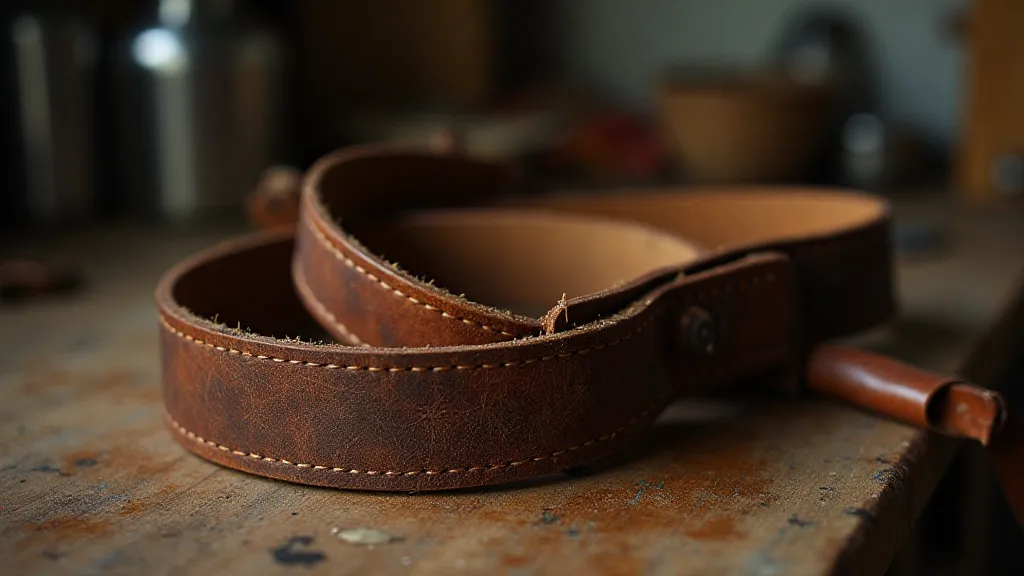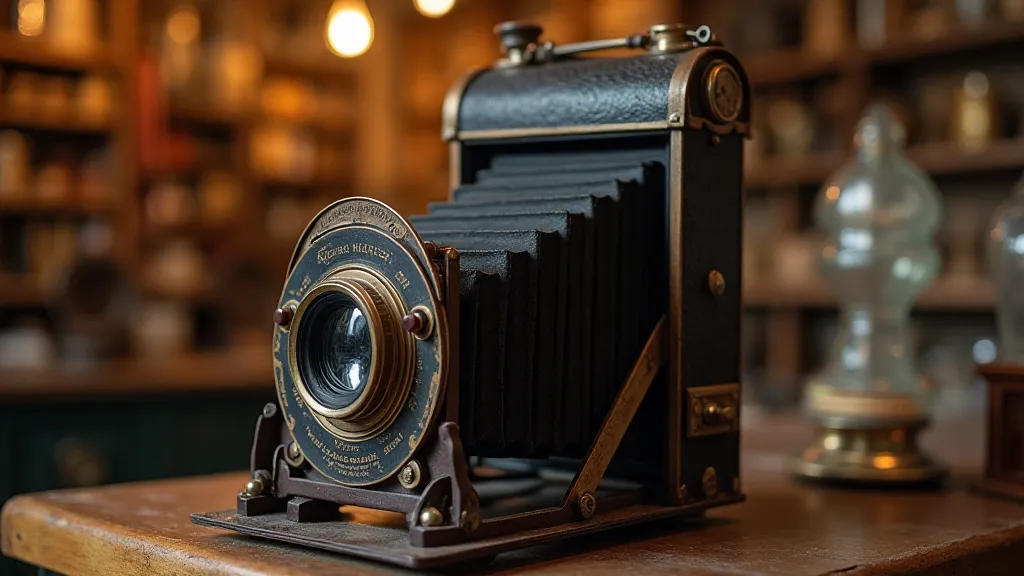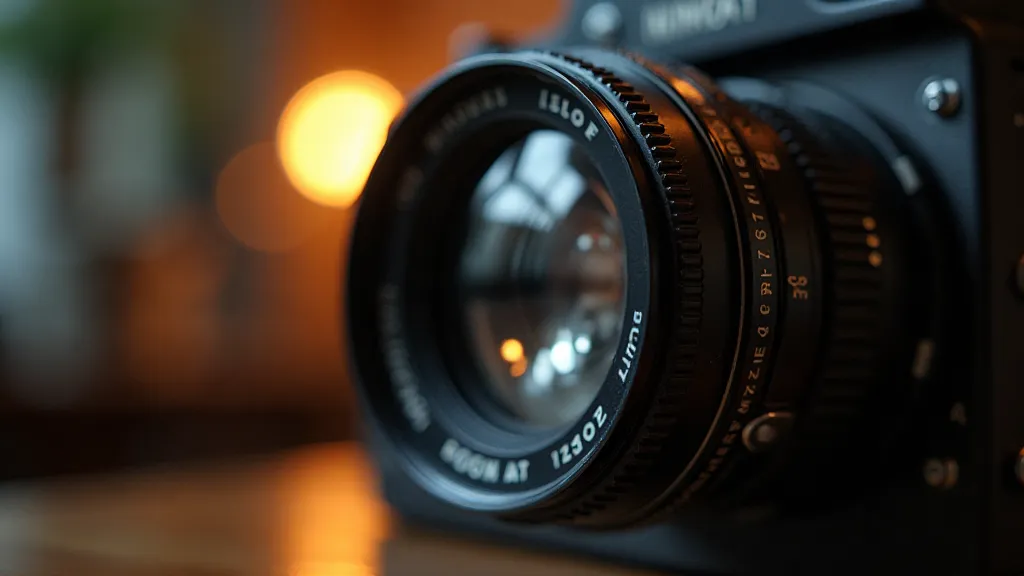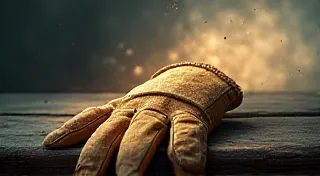Beyond the Lens: The Biographies Imprinted on Antique Camera Bodies
We talk about the pictures. We admire the composition, the light, the moment captured. But the camera itself? It’s often relegated to a supporting role, a tool in the photographer’s hand. Yet, to truly appreciate the world of antique cameras, we must look beyond the lens and consider the silent histories etched into the metal, leather, and wood – the biographies imprinted on the camera bodies themselves.
These aren't just objects; they are time capsules. Each scratch, each faded mark, whispers of a past life. Imagine the hands that once held it, the eyes that peered through the viewfinder, the journeys undertaken, and the moments frozen in time.

The Kodak Brownie: A Family Heirloom
Take, for instance, the Kodak Brownie. Introduced in 1900, it democratized photography, making it accessible to the masses. Its simplicity and affordability meant countless families documented their lives with it. I recently acquired a Brownie Model C, purchased at a local estate sale. The original leatherette covering is peeling, and there’s a faint aroma of mothballs – a ghostly fragrance of decades in storage. But more telling were the faint pencil markings inside the film chamber: "Esther, 1928." It wasn’t just a camera; it was Esther’s, a tangible link to a life lived nearly a century ago. Who was Esther? What moments did she capture? The camera doesn’t tell us, but it sparks the imagination, inviting us to piece together a story.
The Brownie's design itself speaks volumes. Early models were manufactured with an almost heartbreaking level of care. Think about the level of craftsmanship involved in hand-stamping the name “Kodak” on each body, the precise cutting of the bellows, the meticulous assembly of the lens. These weren't mass-produced commodities; they were objects imbued with a sense of pride and artistry, reflective of the era's emphasis on skilled labor and enduring quality.
The Art Deco Elegance of the Leica IIIC
Moving up the scale, the Leica IIIC, popular in the 1950s, represents a different sort of biography. These were cameras for professionals and serious amateurs – photographers documenting significant events, capturing portraits of influential figures, or simply pursuing the art form with dedication. The smooth, Art Deco lines of the Leica, the solid feel of the metal body, speak of a different aesthetic and a higher price point. The leatherette covering on my own Leica is a beautiful burgundy, a color that exudes sophistication and timelessness. I can almost picture a stylish, mid-century gentleman carefully loading film and composing his shots with deliberate precision.
Unlike the Brownie’s amateur charm, the Leica embodies a certain professional gravitas. It wasn’t meant to be a casual snapshotter; it was a tool for someone striving for excellence in photography. The mechanical precision is astounding - a testament to German engineering of the time. The satisfying *click* of the shutter, the smooth operation of the focusing ring, these aren’t just functions; they’re an integral part of the experience, a connection to the craft.
Victorian Giants: The Daguerreotype and Beyond
Venturing even further back in time, we encounter the Victorian giants – the Daguerreotype cameras. These weren't cameras in the way we understand them today; they were elaborate, box-like contraptions requiring lengthy exposures and specialized knowledge. They were status symbols, and the portraits they produced were treasured heirlooms. Consider the sheer dedication required to master the Daguerreotype process – the meticulous preparation of the silvered plate, the precise manipulation of the lens, the careful control of the chemicals. The subjects themselves – stiffly posed and formally dressed – represent a bygone era of societal norms and artistic conventions.
The sheer weight and complexity of these early cameras also speak volumes about the priorities of the time. They weren’t designed for portability or convenience; they were designed to produce a lasting legacy – a visual record of a person's identity, carefully preserved for posterity. Finding one in good condition is a rare and precious thing, a physical embodiment of photographic history.

The Stories the Wear and Tear Tells
It's the imperfections – the scratches, the dents, the faded markings – that truly bring these cameras to life. A worn thumb grip suggests countless exposures. A small chip in the paint might mark a moment of careless handling, a sudden drop, a forgotten memory. These aren’t blemishes to be hidden or repaired; they are the fingerprints of time, the visual poetry of a camera’s journey.
Restoration, when approached with sensitivity, can be a way of honoring that history. A complete overhaul risks erasing the character, the individual story etched into the body. Sometimes, leaving a little wear and tear – a little bit of the past – is the most respectful approach, allowing future generations to connect with the camera’s biography.
Collecting: More Than Just Acquisition
Collecting antique cameras isn’t just about acquiring objects; it’s about becoming a custodian of history. It’s about appreciating the craftsmanship, understanding the technical innovations, and respecting the lives of those who came before us. Each camera tells a story, and it’s our responsibility to listen, to learn, and to share those stories with others.
The journey of collecting can be deeply rewarding. The thrill of the hunt, the satisfaction of finding a rare gem, the joy of connecting with fellow enthusiasts – these are the pleasures that make the hobby so engaging. But, more importantly, it's about preserving a piece of our photographic heritage, ensuring that these silent storytellers continue to inspire and educate for generations to come. The cameras themselves have become artifacts, tangible links to a past brimming with innovation and human connection.

The next time you hold an antique camera, take a moment to consider its biography. Imagine the hands that once held it, the eyes that peered through the viewfinder, the moments it captured. Listen to the silent stories etched into its metal, leather, and wood. You might be surprised by what you discover.





